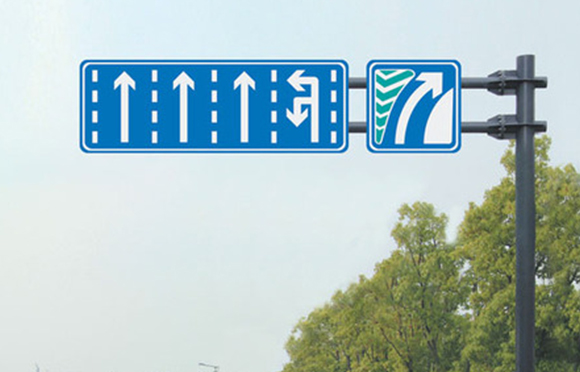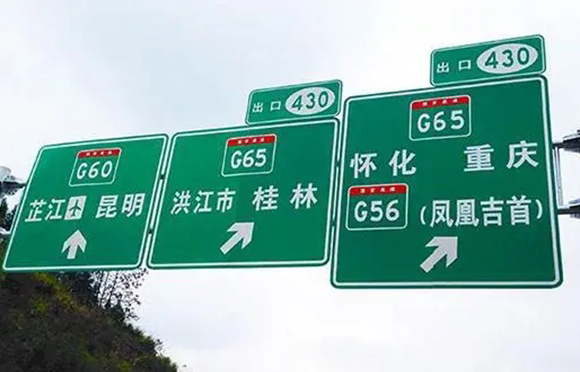With the rapid development of the economy in the 21st century, the urbanization process is generally accelerating, and more and more people are flocking to cities. The established urban space is no longer able to meet the needs of various functions within the city, especially in the issue of traffic pressure. The improvement and scientific planning of the transportation signage system is a very complete system engineering in China's urban construction.

1.Basic requirements for reflecting traffic guidance information
The setting and design of guide signs should follow the principles of urban informatics, and their information composition must strictly match the actual situation of the road. During the information display process, attention should be paid to:
A. Information numbering organizes point like information into larger linear units and represents this information unit with a symbol. The comprehensive use of color, shape, and numbering is to encode all information into a simple and clear information supply source, enabling traffic subjects to obtain the best ideas, quickly read and browse information content, which can reduce the amount of information processing for traffic subjects and form complete spatial sequence information.
B. Standardization and unification of information, through research and analysis, traffic information is refined into readable, understandable, systematic, modular, and standardized knowledge, which is expressed in standardized language and symbol systems. Reasonably handle the relationship between distribution and centralized display. Concentrate and appropriately repeat shared information with high usage frequency, and distribute shared information with low usage frequency.
C. The key issue to consider in information display is to set up a convenient display mechanism based on the needs of different transportation entities, so that the required information can be truly displayed to transportation entities in an easy to understand form at the required time.
D. Strict reliability refers to the method of providing the same type of information in more than one way or carrier to enhance the reliability of information. For example, the combination of no overtaking signs and no overtaking markings. This multi-source information provision method increases the opportunity for information reading; Increased the proportion of transportation entities using specific information sources; Provided confirmation opportunities to avoid possible misunderstandings; Provides multiple expressions for easy recognition.
E. Another way to ensure strict reliability of information is through continuous repetition of information. This is to emphasize and ensure that necessary information is not missed or forgotten (such as setting directional signs at 1km intervals and re setting them at the actual diversion points of interchanges).
F. Information dispersion is the solution to the problem of excessive quantity of traffic sign information. The principle of dispersion is to transfer the least important information from an information overload zone to an upward or downward direction, allowing transportation entities more time to process information.
2. The content and degree of information presentation
The design and setting of traffic guidance signs should be based on human cognition and habits, and the content and degree of the traffic guidance sign system should be determined:
Current position
Expected orientation and point of change in orientation
Expected traffic conditions, road conditions, and traffic control methods
Provide familiar information content to avoid strange and unfamiliar situations
Provide reliability information
Warning signs need to be immediately responded to
Requirements for detailed guidance of place names on directional signs to the administrative level of the region
The regulations on the detailed guidance of place names on directional signs to varying degrees
Requirements for the direction of road signs and the range to which the road points
Requirements for cross regional guidance of directional signs
Traffic guidance signs are placed on roads and their surrounding spaces. In the composition of visual spatial information in road traffic, signs and markings account for over 75% of the information, forming the main body of guiding traffic in the formation of traffic order space.

One is the guidance of visual transportation space. The directionality of visual space depends on the continuity of spatial information, which in turn depends on the continuous presentation of spatial vision, roads, environment, signs, and markings, becoming the primary basic point of traffic sign planning and design.
The second is to know the orientation of transportation space. The directionality of perceptual space depends on the guiding role of spatial information, namely spatial vision, iconic buildings, geographic coordinate structures, regional spatial networked information, and guidance signs. So the directional information of directional signs, information prompts of expected locations, and map directions become the second basic point of traffic sign planning and design.